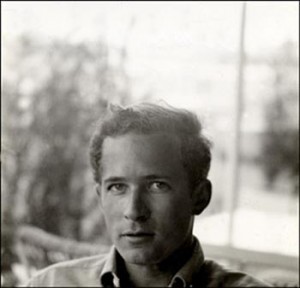A Walk Into The Sea: Danny Williams And The Warhol Factory
 I’m pretty up on the Warhol Factories, but mostly the later iterations in the ’70s; I hadn’t heard of Danny Williams, so I looked forward to seeing A Walk Into The Sea.
I’m pretty up on the Warhol Factories, but mostly the later iterations in the ’70s; I hadn’t heard of Danny Williams, so I looked forward to seeing A Walk Into The Sea.
But like many Warhol-related docs, it’s a bit disappointing.The filmmaker, Esther Robinson, is also Danny Williams’s niece, and I can see why she would be attracted to the subject matter even if he weren’t a relative: Williams, also a filmmaker and the lighting-design guy behind the Exploding Plastic Inevitable (…apparently; Paul Morrissey disputes this, but Paul Morrissey is a disputatious guy), took off during a visit with family, parked his car near a rocky outcropping by the sea, and disappeared.He didn’t leave a note; his body was never found.
The film doesn’t really investigate whether he disappeared or died; almost everyone is operating under the assumption that it’s the latter.Several people speculate that he just vanished to begin a new life, including one of Williams’s sisters, but while their reasoning is not uncompelling — Williams had fallen out of favor with Warhol, couldn’t make much artistic progress given the purposeful randomness and lack of narrative structure Warhol encouraged (as well as drug abuse by other people, like Williams, who perhaps couldn’t handle the physiological/depressive effects of the meth everyone was on nonstop at that time), felt alienated by his sexuality, got fed up, and stepped sideways into another identity — their rationales are just as applicable to the theory that Williams took his own life.Williams had other movie credits on the go; he worked with the Maysles brothers, which had only started to have the cachet it has now but which would have represented a lifeline out of the chaotic atmosphere surrounding Warhol.We’ll never know.We can see that he had a lot of talent, that he had a loving approach to movement and light that’s very simple and beautiful and hard to look at at times.
Robinson’s movie, however, is way over-directed and over-produced.I think it’s an attempt to match the presentation with the subject, or to provide visual continuity between Robinson’s material and Williams’s, but it doesn’t really work — too much fiddling with exposures and focus, too much emphatic cello and pointed use of film ends.The interview segments are all very tightly framed close-ups, in what looks like a…damn, I forget the “real” name of this set-up, but it’s when you pull the camera itself as far back as you can and then zoom in as tight as you can.Whatever it’s called, it’s too much; I think she’s better served by more contrast with her uncle’s work, not by film-schooling every frame of her own film to try to keep up.Let the story stand for itself.
And there isn’t much of one.I don’t have any better sense of Williams than I did going in; I already knew that Warhol manipulated people to draw better ideas out of them, and to amuse himself.I already knew that many many people found this frustrating at best, and utterly psychologically dislocating at worst — that trying and failing to keep his attention could shatter what John Cale calls in the film the “incomplete people” he collected.And while I feel after watching A Walk Into The Sea that I have a much better grasp of Cale — and would like to have lunch with him and listen to him talk about things, because he has a relaxed, confident exactness to him — the movie isn’t about Cale.
Williams doesn’t seem to have had much personality, based on what we see here; partly that’s because the interviews tend to focus more on the interviewees than on Williams, and partly it’s because, after Valerie Solanas shot him, everyone else’s reactions to Warhol’s exploitations faded by comparison.But forty years have passed, and Robinson needed to work a little harder to bring Williams into the light.As it is, I liked the movie fine, but found the visual curlicues distracting and filler-y.It’s a good story but not a huge one, and would have benefited from a more straight-ahead presentation that made its subject more distinct and less Zelig…if that were possible to do.
Tags: movies





Cale wrote an autobiography called “What’s Welsh for Zen” that I enjoyed quite a lot.